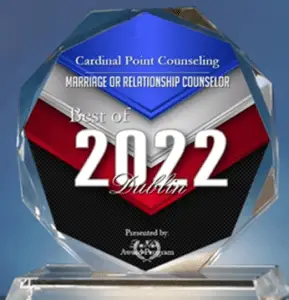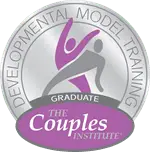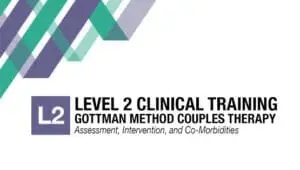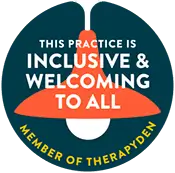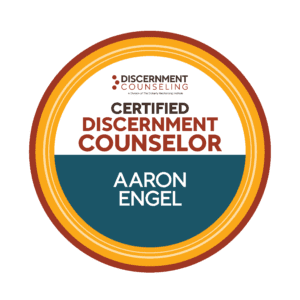Although somewhat competitors, John Gottman, the co-creator of the Gottman Method of Couples Therapy, recommended that every counselor learn Emotionally Focused Therapy (EFT). He advises marriage counselors to learn Sue Johnson’s Emotionally Focused Couples Therapy (EFCT). The Gottman Method is somewhat structured, while EFT is more of a way of interacting. The two complement each other very well and make the other approach more effective. Most of this article on EFT is based on the book “The Practice of Emotionally Focused Therapy” by Sue Johnson (2020). Cardinal Point Counseling uses a combination of the Gottman Method and Emotionally Focused Couples Therapy to give you the best of both worlds. The two approaches are the most researched and proven forms of couples therapy. The EFT therapist has six major tasks to go through to implement EFT. The term “Emotionally Focused Therapy” often turns some people off, especially men who don’t want to talk about their feelings with a stranger. The good news is the EFT is designed to help you talk about emotions in a safe way that feels more natural even for those not used to or skilled at talking about feelings.
To access and reformulate emotion, the therapist (and hopefully eventually clients with the therapist’s help) needs to experience and invoke empathy. Part of this is reassuring clients that their experience makes sense to someone else and that they are not alone. It is also important that clients learn to listen to one another in a more attuned way. Conclusion: a counselor and clients can often help one find the words that they cannot find.
1) The Creation and Maintenance of a Therapeutic Alliance
A professional therapeutic alliance is essential for any form of therapy. Another post talks about couples counseling as being a three-person team. The therapist acts as a collaborative partner. Simply asking your counselor what you should do or your counselor telling you precisely what you should do without your input is not effective therapy. Your marriage counselor needs to work with you to collaborate and help you figure out what you may already know deep down. It is crucial that if your therapist takes sides, they take the side of the relationship itself. You both are clients, but the primary client is the relationship. An excellent therapeutic alliance is the most critical EFT task, although this alliance is essential for any form of individual or couples counseling.
Sue Johnson’s book talks about the importance of the counselor taking a non-judgmental stance. People who come to Cardinal Point Counseling often comment that they do not feel judged. This is true even of couples where one person has had an affair or has been abusive. While not an exception to this rule, healing from an affair or addiction often requires a focus on those issues first. This can temporarily lead one partner to feel like most of the attention is on them. However, this attention is to help them and help the relationship. There also may be situations where the therapist needs to call out one partner for perhaps speaking with unhealthy patterns in therapy that are not helping the relationship.
Cardinal Point Counseling does not believe in formally diagnosing a client(s) with a mental health issue unless the client wants a diagnosis or there is a very compelling reason to do so. As Sue Johnson notes, it is challenging to be non-judgmental if the counselor sees the clients as defective or deficient in some way. For example, some counselors may see a client who gets close to their partner and then withdraws as having a borderline personality disorder. An EFT therapist is much more likely to see them needing to work on rather ordinary opportunities to improve attachment patterns. An EFT therapist has a relatively positive view of human nature.
2) Accessing and Reformulating Emotion
Emotions often can take the form of at least primary and secondary emotions. For example, anger can be a secondary emotion that is built on another primary emotion, such as frustration. Anger can be a response to frustration, and we may need to address the frustration to get rid of the anger. EFT therapists help clients understand their primary and secondary emotions and address them appropriately. An EFCT also challenges each client’s perceptions of their partner’s emotions. Accessing emotion can open the door to powerful and quick feedback on how a situation impacts another person and lead to further exploration. Sue Johnson believes emotion helps us deal quickly with important interpersonal encounters. Emotion is seen in EFT as basically an adaptive experience to help us survive and flourish.
Sue Johnson refers to EFT as a dance or tango and emotion as the music that guides the dance. She describes that while thinking can change thoughts, only feelings can change emotion. I contend that there is plenty of room and value in both thinking, logic, and emotion in couples therapy. Whereas EFT focuses on emotion, I find the Gottman Method focuses more on a combination of logic, structure, and emotion. Pairing the two approaches together can bring about the best of both worlds.
Emotion is evoked in EFT as vividly as possible. Some leniency may be necessary with your therapist as they may make some educated leaps to get to your core emotions and occasionally guess incorrectly. However, such action can still broaden and improve the interaction, as the client uses an incomplete interpretation to clarify their meaning. To articulate one’s primary emotion is often the first step away from it, assuming their emotion is maladaptive at the moment. Emotions most heavily focused on in emotionally focused therapy often deal and tie most closely with attachment patterns. Often, these crucial emotions relate to fear and vulnerability.
References
Johnson, S. M. (2020). The practice of emotionally focused couple therapy: Creating connection. Routledge.


